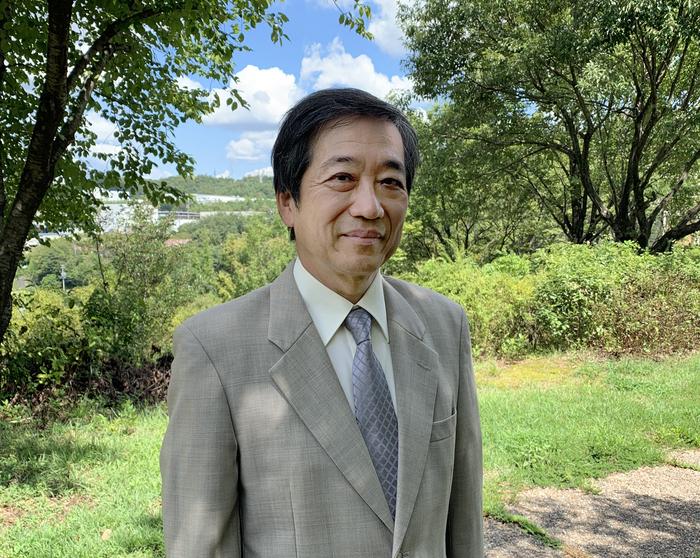Research is being conducted around the world to confine high-temperature plasma in a magnetic field to realize nuclear fusion power generation. The most important issue is maintaining stable high-temperature plasma for a long time, which involves many challenges. The plasma confined by a magnetic field has a temperature gradient from the low-temperature periphery to the high-temperature center, where the fusion reaction takes place, with the temperature at the center being over 100 million degrees Celsius and that at the periphery being several hundred thousand degrees Celsius. This temperature gradient is not uniform, and its location varies. This is because the gradient is small when the vortex flow (turbulence) generated in the plasma is strong and becomes large when it is weak. Since this discovery, elucidating and controlling the turbulence mechanism has become a central theme in plasma physics for the realization of fusion power generation.

Credit: Katsumi Ida
Research is being conducted around the world to confine high-temperature plasma in a magnetic field to realize nuclear fusion power generation. The most important issue is maintaining stable high-temperature plasma for a long time, which involves many challenges. The plasma confined by a magnetic field has a temperature gradient from the low-temperature periphery to the high-temperature center, where the fusion reaction takes place, with the temperature at the center being over 100 million degrees Celsius and that at the periphery being several hundred thousand degrees Celsius. This temperature gradient is not uniform, and its location varies. This is because the gradient is small when the vortex flow (turbulence) generated in the plasma is strong and becomes large when it is weak. Since this discovery, elucidating and controlling the turbulence mechanism has become a central theme in plasma physics for the realization of fusion power generation.
Professor Ida’s award is for his pioneering contributions to the experimental discovery of various turbulent flow states in plasmas confined by magnetic fields. His research interests include:
- Turbulence-driven flows.
- Electric field shear in H-mode states.
- The effects of magnetic topology and nonlocality on transport.
To clarify the nature of turbulence, Prof. Ida and his colleagues made detailed measurements of the plasma flow, focusing on the area where the temperature gradient in the plasma became stronger. They observed spontaneous one-directional flows (toroidal and poloidal flows). Moreover, it was discovered that the flow had spatial intensity. This flow is called “shear flow. In 1990, it was discovered that this shear flow is not generated by an external source but by the plasma itself and that it works to weaken turbulence and strengthen the temperature gradient. In other words, turbulence and shear flow (and the resulting electric field gradient) are competing with each other in the plasma, and the balance between the two produces a variety of temperature gradients and temperature profiles. Later, they experimentally clarified that there are various cases (states) of turbulence and shear flow profiles as well as temperature profiles. For example, when turbulence-driven shear flow and electric field gradients are generated at the periphery of the plasma, they, in turn, suppress the turbulence, resulting in an H-mode plasma, in which the temperature is high near the periphery. This phenomenon can also occur inside the plasma, resulting in a hotter plasma near the plasma center and forming an internal transport barrier. When the plasma changes to a topology with a closed crescent-shaped magnetic surface (magnetic island), there is no temperature gradient in the magnetic island and no turbulence. They have also shown that the nonlocality of turbulence is responsible for this transition between one state to another.
Professor Ida commented, “The research results for which the prize is awarded have advanced the physics of plasma turbulence control and temperature profile control, and have opened a new frontier in the experimental study of turbulent transport in toroidal plasmas. He stated “The discovery of many essential processes in turbulent transport in magnetic confined plasmas will enhance the value of plasma physics as a modern physics discipline and will contribute significantly to the realization of fusion power.”
About Chandrasekhar Award
This prize was established in 2014 by the Subcommittee on Plasma Physics of the Association of Asian Pacific Physics Societies (AAPPS-DPP) and is named after Subrahmanyan Chandrasekhar, a Nobel Prize winner in physics and a contributor to plasma physics.




